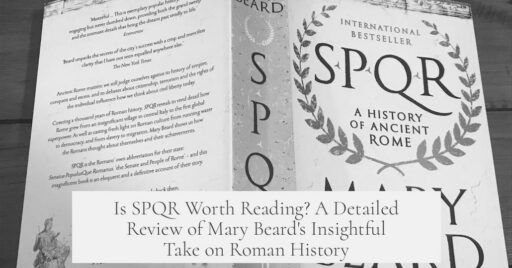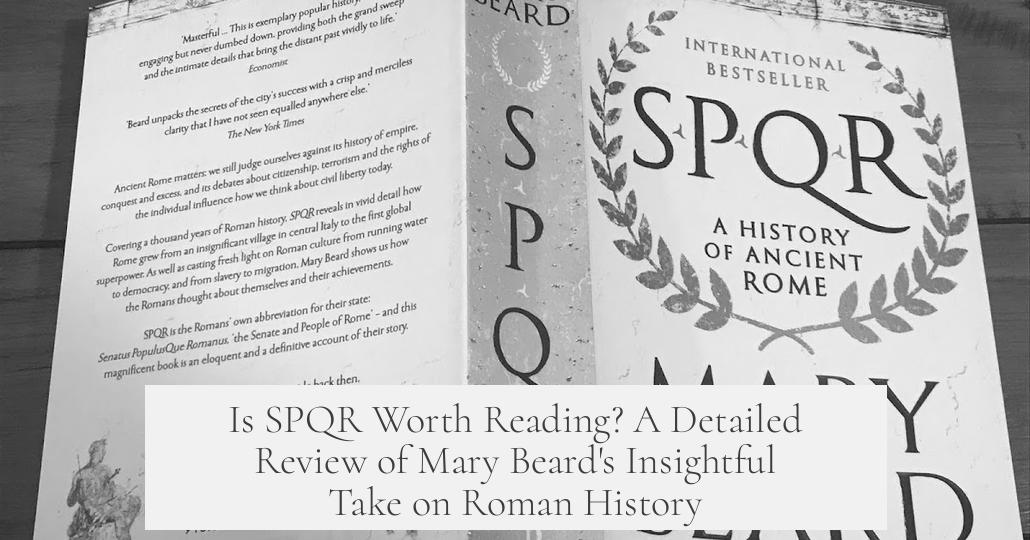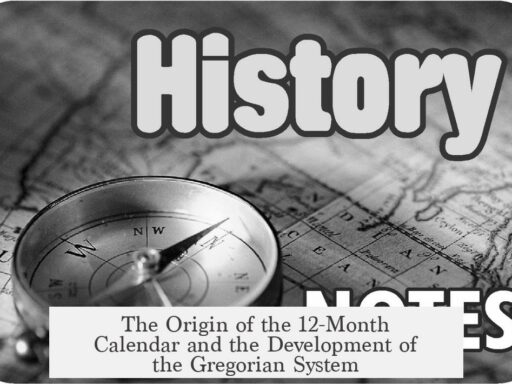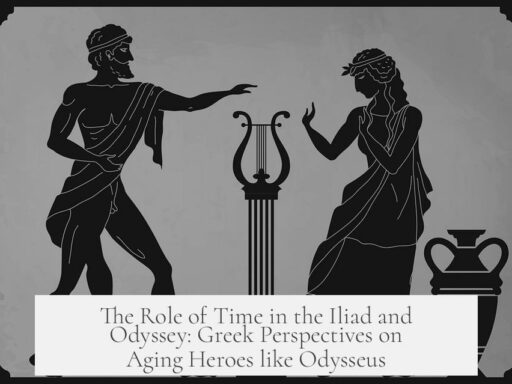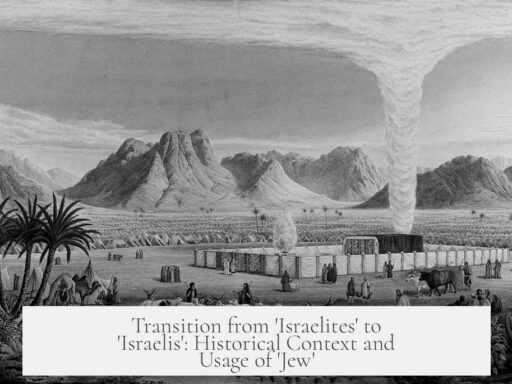SPQR by Mary Beard is a well-regarded book on Roman history, especially valued for its accessible and engaging overview of the Roman Republic and early Empire. However, it is best suited for readers who possess some prior knowledge of Roman history rather than complete newcomers.
Mary Beard, a distinguished scholar, offers a thorough and reliable account of Rome, focusing not only on political events and famous figures like emperors and generals but also on social history. The book emphasizes how the Romans viewed their world and themselves, providing insights into their culture and mindset. Beard explores how Roman history has been interpreted over the centuries, revealing the way Western societies have used the Roman past to frame their own identities.
SPQR excels in illustrating early Roman history. Beard approaches problematic ancient sources critically, treating myths and literary narratives as clues to later Romans’ perceptions rather than straightforward facts. She clearly distinguishes between well-supported facts and fragile inferences, which helps readers understand the difficulties in reconstructing Rome’s beginnings.
Despite its strengths, the book has limitations. Its structure is non-chronological, often jumping back and forth in time. For example, it opens with the Catiline Conspiracy, a specific event far into the Roman Republic’s timeline. This approach can confuse readers unfamiliar with the broader historical framework. Consequently, SPQR does not serve as an introductory chronological history but rather a thematic and interpretive one.
Another limitation is that the history covered stops around the reign of Caracalla; it does not extend through the entire history of the Western Roman Empire.
SPQR also may not reflect the very latest academic research. While it is thorough, it does not aim to introduce new findings or perspectives that experts might expect in specialized works. Thus, advanced scholars might find the book familiar rather than groundbreaking.
The book suits readers who already have some background knowledge of Rome’s three main eras: the Kingdom, Republic, and Empire. It is recommended for those seeking a general but nuanced introduction to Roman history with an emphasis on culture and historical interpretation. However, complete newcomers may find the presentation overwhelming or unsatisfying due to the lack of clear chronology and explanations of basic concepts.
Mary Beard’s academic credentials enhance the book’s credibility. She balances scholarly rigor with popular readability, making complex historical debates accessible without sacrificing depth.
- Accessible and engaging narrative covering the Roman Republic and early Empire.
- Emphasizes social history and Roman cultural perceptions.
- Critical use of ancient sources for early Rome’s history.
- Non-chronological structure may confuse beginners.
- Lacks coverage beyond Caracalla and some of the latest research.
- Best for readers with a basic background in Roman history.
- Highly credible author with academic expertise.
In short, SPQR is a good book on Roman history for readers who want an engaging and thoughtful account, particularly those who have some familiarity with the subject. It works well as an introduction to Roman culture and political life, but it is not a step-by-step historical narrative. For absolute beginners, a more straightforward chronological introduction may be preferable before reading Beard’s work.
Is SPQR a Good Book on Roman History? A Detailed Look into Mary Beard’s Popular Work
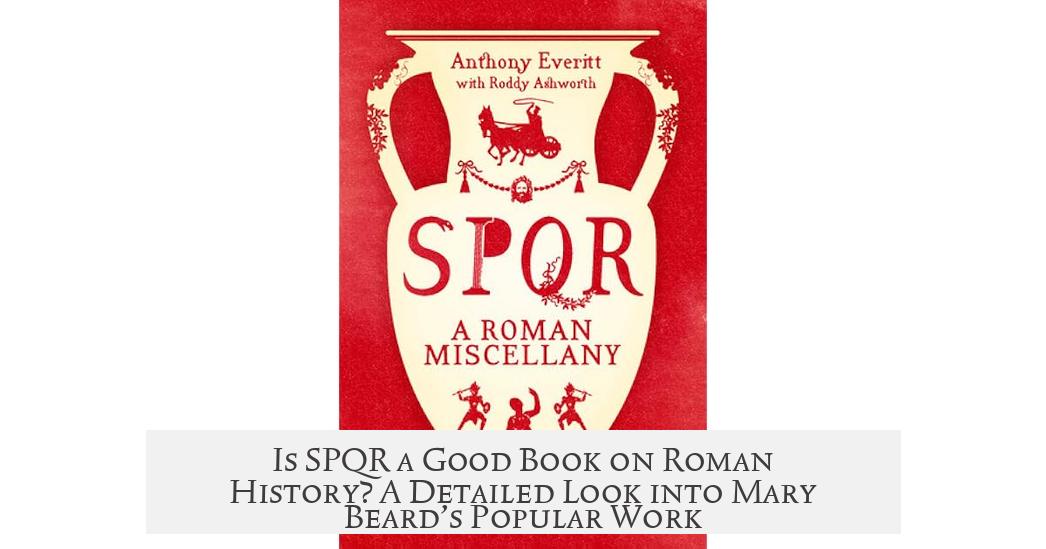
If you’re wondering, SPQR by Mary Beard is indeed a good book on Roman history—but with some important caveats that every reader should know. This isn’t your average dry textbook or a purely chronological account. Instead, it’s a lively, scholarly, and sometimes unconventional exploration of Rome’s complex past. But is it the right book for you? Let’s break down why SPQR has earned its reputation and where it might trip up readers new to the subject.
Mary Beard is not just any historian. She’s a respected scholar with impeccable academic credentials. Her expertise colors every page. So when she talks Rome, she really knows her stuff. But she also knows how to tell a story.
The book’s biggest strength is its accessibility. Faithfully covering the Roman Republic and early Empire, SPQR delivers a rich overview that’s easy to digest. It doesn’t drown you in minute details but balances political events, biographies of key figures, and social history. You get insight not just into what happened, but how the Romans themselves thought and how they’ve been interpreted through the ages.
A Fresh Angle on Roman History
What sets SPQR apart from other history books is its attention to the role of Roman history itself in Western culture. Mary Beard explores how later societies have used and reshaped the Roman legacy to serve different agendas. That’s a fascinating angle many history books overlook.
For example, the early chapters on Rome’s origins show Beard’s careful approach to ancient myths. She treats these stories less as factual history and more as reflections of Roman attitudes about their past. This teaches readers how to handle problematic sources—a useful skill for history buffs and students alike.
The book’s style is engaging too. Sometimes Mary Beard’s humor sneaks in, making heavy history feel lighter. If you’ve ever yawned your way through stuffy academic tomes, SPQR provides a breath of fresh air. You’re entertained while you learn, a rare and welcome combo.
But Beware: This Is Not a Beginner’s Guide
Here’s where the book can puzzle new readers. Contrary to what some expect, SPQR is not a simple chronology of events. It jumps back and forth in time. For instance, the very first chapter dives into the Catiline Conspiracy, a political crisis from the late Republic. That’s like starting a book on US history with the JFK conspiracy. Surprising and potentially confusing if you don’t already have some background.
If you pick up SPQR without at least a basic idea of Rome’s timeline—Kingdom, Republic, Empire—the book’s structure might overwhelm or frustrate you. It assumes you can follow discussions that skip centuries and touch on complex events without hand-holding.
Moreover, it only covers up to Emperor Caracalla, not the entire fall of the Western Roman Empire. So if you want a complete run-through from Romulus and Remus to Romulus Augustulus, you’ll need another source.
Who Will Love SPQR, and Who Might Want to Skip It?
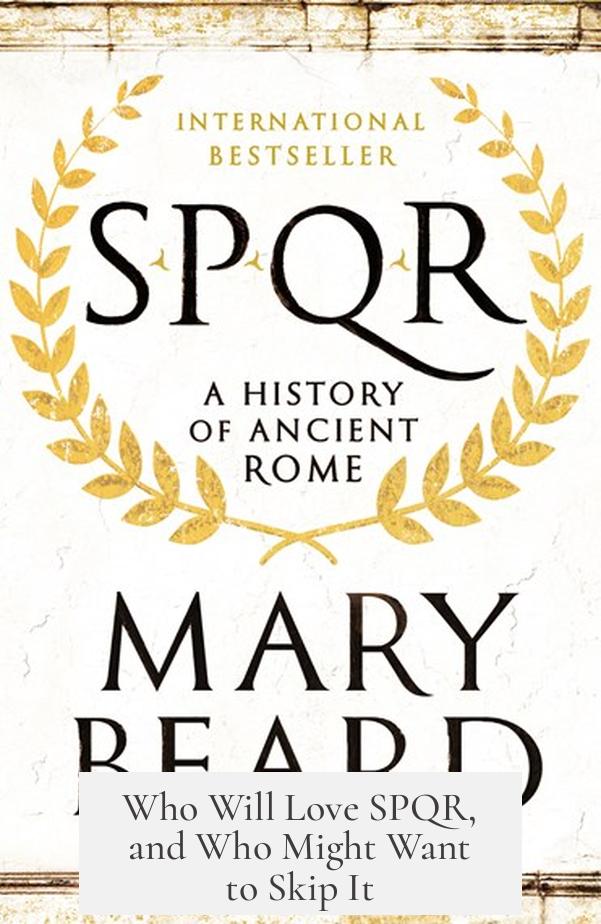
Recommended: This book fits readers who already know a bit about Rome but want to dig deeper into what made the Romans tick. You might know the major periods or figures but crave a more nuanced, interpretive approach. It’s a fantastic next step after introductory texts or documentaries.
Not recommended: Completely new learners. If you’ve never heard of Julius Caesar or don’t understand why the Republic fell, SPQR might dazzle but also confuse or discourage you. If you want chronological basics, try a more straightforward survey first.
Balancing Pros and Cons: Is It Worth Your Time?
To be clear, the book isn’t cutting-edge on the latest academic discoveries. It doesn’t claim to break new ground for specialists. Instead, it synthesizes well-known scholarship with fresh cultural insights. So if you’re an expert expecting new theories or unpublished facts, you’ll be left wanting.
That said, SPQR remains a valuable resource for general readers. Its thorough and reliable account, combined with scholarly integrity and narrative flair, makes it a standout work. You get the political history you expect, cushioned with social context and cultural analysis that brings ancient Rome alive.
Think of it as a carefully curated museum tour led by a passionate guide. You won’t see every artifact or every corner, but the highlights you do see are explained with warmth, wit, and clarity.
Practical Tips for Reading SPQR
- Brush up on basic Roman history first. A quick primer on the Kingdom, Republic, and Empire phases will help you keep up.
- Don’t read SPQR as a linear narrative. Embrace its thematic approach and enjoy the jumps in time as windows into different aspects of Roman life.
- Take note of how Beard handles sources—question myths and consider why Romans framed their history the way they did.
- Use the book as a springboard. Supplement with timelines, maps, and other resources to fill in any gaps.
Final Verdict
Is SPQR a good book on Roman history? Absolutely—if you come with some prior knowledge and an open mind. It’s an engaging, readable, and thoughtful exploration of Rome’s Republic and early Empire, rich in political, social, and cultural insights. It respects scholarly rigor while inviting readers to see Rome through fresh eyes. However, newcomers looking for a simple, linear history may find its style challenging or incomplete.
For anyone eager to explore why Rome still captivates us, what truly made Romans “tick,” and how their legacy shaped Western thought, Mary Beard’s SPQR offers an unforgettable journey. Ready to dive in? Just bring a map of ancient Rome—and maybe a timeline too.
Is SPQR suitable for readers new to Roman history?
SPQR is not ideal for complete beginners. It assumes some prior knowledge and jumps around the timeline. Newcomers might find it confusing or overwhelming.
What makes SPQR stand out from other Roman history books?
It offers insights into both political events and social history. Mary Beard also explores how the Romans viewed their own past, adding depth beyond standard accounts.
Does SPQR cover all periods of Roman history?
No, the book mainly focuses up to the reign of Caracalla. It does not extend to the fall of the Western Roman Empire.
How up-to-date is the research in SPQR?
The book is reliable but not fully current with the latest findings. Experts may not find new insights here.
Who is the ideal reader for SPQR?
Those with some basic understanding of Roman history who want an engaging, broad overview. It’s good for readers curious about the Romans’ culture and political history.
